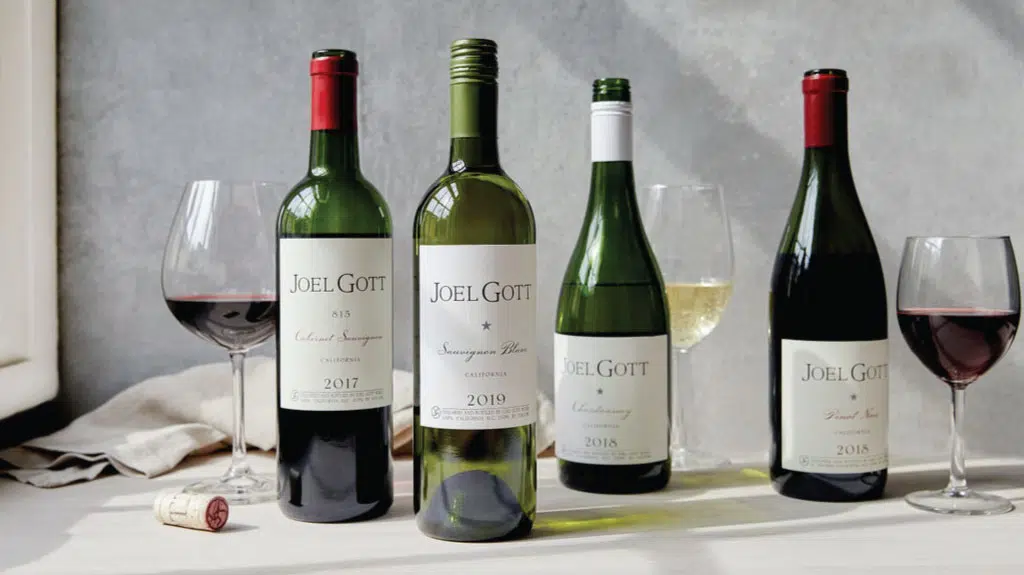Wine bottle shapes explained

Observant wine drinkers among you will have noticed a strange thing about wine: most wine comes in one of just a few common shapes of wine bottle. Is there a rule governing what type of wine goes in which bottle?
For example, almost all chardonnay comes in one shape of bottle; but almost all riesling is sold in a different shape of bottle. Why is this? Does it make any difference to the taste of the wine? What do different wine bottle shapes mean? We aim to demystify this phenomenon and explain the meaning behind winemakers’ choice of bottle shape for their wines.
Regional roots
There are a handful of standard wine bottle shapes used the world over; almost all bottled wine comes in these shapes. Although used for bottling a variety of different wines nowadays, the shapes have their roots in history. Consequently, we know the shapes by the name of the European wine growing region they originated in.
Back in the day, wines didn’t usually travel far from the winery. Local production and consumption meant it made sense to use whatever bottles were available locally. So if a particular region famously grew a particular type of grape, the shape of the bottle not only proclaimed the region but also indicated what type of wine it was. Over time, the association between grape and bottle shape gradually became tradition; and as wine production took off in the New World, those countries’ wines took on the associations as well.
The most common wine bottle shapes
Burgundy
The Burgundy shape bottle has a wide bottom and curved, sloping shoulders leading up to a short neck. This type of bottle was traditionally made and used in the Burgundy region of France. Pinot noir and chardonnay are the primary grapes of Burgundy, so you often find these varietals bottled in the Burgundy shape bottle, even if they come from the other side of the world. A popular example from TWB Cellar Limited store is the Trumpeter Reserve Chardonnay.
Champagne
The Champagne bottle is just like the Burgundy bottle, but thicker and heavier to withstand the enormous pressure of the sparkling wine. Also the indentation at the bottom of the bottle (known as a “punt”) is deeper in a Champagne bottle. Wineries all over the world use this type of bottle for sparkling wines. See Moët & Chandon’s Impérial Champagne for the classic bottle shape.
Rhône
The Rhône shape bottle is very similar to the Burgundy, but heavier, taller and with a longer neck, and traditionally has an embossed badge. It’s most familiar from wines like Château de Beaucastel’s Châteauneuf-du-Pape, which is made from grenache, syrah and mourvèdre amongst others. You’ll therefore find these varietals in a Rhône-style bottle quite commonly; however, modern bottles usually have no badge embossed on them.
Bordeaux
The Bordeaux bottle is distinctively straight, upright, with high shoulders and a deeper punt than the Burgundy. Most wines from Bordeaux are a blend of cabernet sauvignon, merlot, cabernet franc and others; and so the Bordeaux shape bottle is often used for these varietals. White wines also make up a small part of Bordeaux’s production; you’ll commonly find white varietals such as sauvignon blanc and sémillon in Bordeaux shape bottles. Hesketh’s Bright Young Things Sauvignon Blanc is a good example.
Alsace
Lastly, the Alsace (or Rhine) bottle shape is elegant: tall and slender with a shallow punt. They are notoriously difficult to store in your home wine rack, as they can sometimes slide out by themselves! Wineries often bottle riesling, gewürztraminer and other varietals commonly grown in the border regions between France and Germany in Alsace bottles. Check out St John’s Road Peace of Eden Riesling in our store.
Bottle shape meaning
So the commonest wine bottle shapes are due to an association between traditional glassblowing techniques and local grape varieties. Their meaning is historical, if anything; and perhaps in some cases the winemaker is aligning themselves with a particular winemaking tradition through their choice of bottle shape.
More wine bottle shapes
If you travel widely enough in Europe you’ll find even more traditional bottle shapes which have not made it into mainstream global wine production for one reason or another. One example is the fiasco, the straw-covered bottle from the Chianti region of Italy. These were traditionally hand-blown, round-bottomed bottles, the straw basket providing some protection as well as a flat base. Although quirkily attractive, they would not be easy to produce in the large quantities needed today.
Nowadays, with a global wine market, wineries can make their wines stand out from the crowd with truly unique bottles. Gérard Bertrand presents his Cote des Roses series of wines in bottles which resemble a rose; Nicolas Feuillatte’s Palmes d’Or Champagne comes in a distinctive black dimpled bottle. You could see this as gimmickry, but from a marketing perspective the unique designs work very well.
Bottle shape and wine flavour
At the beginning we asked whether the shape of the bottle makes any difference to the taste of the wine. The answer is a definite “no”. Wine could be bottled in fish- or boot-shaped bottles, it would still taste the same.
At the end of the day, it’s what’s inside the bottle that counts; and although there are traditions surrounding the bottling of wine, there are no hard-and-fast rules. It’s up to winemakers to choose the type of bottle to present their wine in. I suspect, as long as the wine is good, most of us don’t really care what shape the bottle is!
